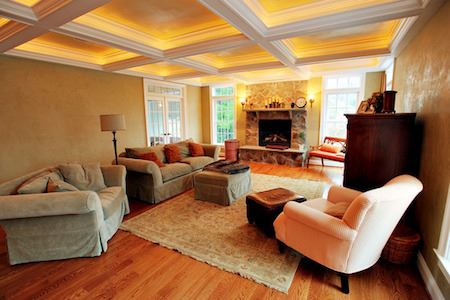The Energy Independence and Security Act was passed back in 2007 as a way to make lighting more efficient. This was meant to bring in new, greener technology, and phase out old, inefficient light bulbs and fixtures.
Slowly, we’ve been trading out old incandescent lighting and replacing them with LED lighting instead. But with this new technology comes a new set of rules. Going to the store and picking up light bulbs based on watts doesn’t work anymore. Instead, you see things like color temperature and lumens? What does all of this mean?
Wattage (Watts)
This is the first place of confusion.
Watts measure the electricity a bulb needs to produce light. This is how all light bulbs are sold.
With old technology, when a bulb burned out, you went to the store and replaced it with a bulb with the same wattage. However, LED lights consume less electricity and need fewer watts to produce the necessary light. If you’re replacing a 100 watt bulb, you won’t purchase a 100 watt LED.
Instead, you’ll look for an LED bulb that has replacement wattage of a conventional bulb. An LED 100 watt lamp may replace a traditional 400 watt metal halide bulb, for example.
Lumens
With LED lighting, you won’t look at wattage to determine how bright a bulb is. Instead, focus in on lumens, which measure the total visible light produced by the bulb. The more lumens it produces, the brighter the bulb will be.
Lumens are the most important part of knowing how much light an LED bulb will produce. Look at lumens per watt for an accurate measure of how many lumens are produced for every watt of energy a bulb consumes. The higher this efficiency rating, the more efficient your light source will be.
This is especially useful as we move forward with technology, and you continue to upgrade your LED lighting technology to operate a greener home or office.
Color Temperature
You’ll also see this listed as Correlated Color Temperature, which tells you the color of light the source emits. Lower numbers indicate warmer colors – reds, yellows, and oranges. Higher numbers indicate cooler temperatures – blues and shades of white. You’ll find warm shades listed around 2700k while cooler tones will be around 5000k.
This allows you to pick the appropriate colors and brightness for your conditions. Offices may need whiter, brighter light, while a cozy reading nook in your home may do better with softer, warmer light mimicking candles or firelight.
Are you ready to invest in LED lighting technology? How can we help?

